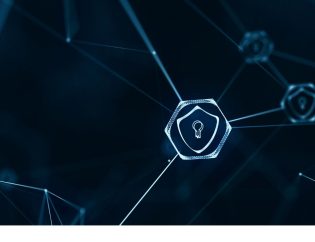
Introduction
What is cybersecurity? Simply put, it’s the practice of protecting computer systems, networks and data from various digital threats. In our connected world, these attacks can lead to serious consequences, including financial loss and data breaches. Therefore, understanding cybersecurity is crucial for everyone—whether you're an individual, a business, or part of a larger organization. In this article, we’ll explore its significance, various types, key features and essential principles.
What is Cybersecurity?
Cybersecurity involves a range of practices aimed at safeguarding computers, servers, networks and data from cyber threats. These threats can take many forms, such as malware, ransomware and phishing attacks. As technology evolves, so do the tactics used by cybercriminals, which is why staying informed is vital. Understanding what is cybersecurity is important for everyone, especially in today’s digital environment.
The rise of the internet has changed how we communicate and share information, making our lives easier but also increasing our vulnerability to cyberattacks. A single breach can lead to significant damage, affecting personal information and organizational integrity. Therefore, cybersecurity has become essential for individuals, businesses and governments alike.
The Growing Importance of Cybersecurity
As businesses increasingly rely on technology, the need for strong cybersecurity measures is more critical than ever. In fact, the global cybersecurity market is expected to grow significantly, reaching around $300 billion by 2024. This growth highlights how essential it is for organizations to invest in effective security solutions.
Cyberattacks can have a ripple effect, not just harming the targeted organization but also impacting consumers and partners. High-profile breaches at well-known companies have raised public awareness about the importance of cybersecurity. When data is compromised, it not only affects the company’s bottom line but also damages customer trust and loyalty. As a result, organizations must prioritize cybersecurity to protect their assets and maintain their reputation.
What is Important in Cyber Security
When considering what is important in cyber security, several key factors come to mind:
Data Protection: Protecting sensitive information is essential. This means implementing measures to secure personal data, financial records and confidential business information to prevent identity theft and fraud.
Network Security:
Keeping networks safe from intrusions and attacks is crucial. This involves using firewalls, intrusion detection systems and secure protocols to maintain network integrity.
Incident Response
Having a plan for responding to security breaches is vital. Quick action can minimize damage and restore normal operations effectively.
User Awareness
Educating employees and users about cybersecurity risks and best practices is crucial. Since human error is often a significant factor in successful cyberattacks, fostering a culture of awareness can significantly reduce risk.
Compliance:
Following industry regulations and standards is essential. Adhering to laws such as GDPR and HIPAA helps organizations avoid legal issues and build trust with customers.
By focusing on these areas, organizations can significantly reduce their risk of cyberattacks and data breaches, ensuring the security and confidentiality of their information.
What are the Different Types of Cybersecurity?
Cybersecurity is not a one-size-fits-all solution. It includes various categories that address specific aspects of protection. Here are some key types of cybersecurity that organizations should consider:
Application Security:
This protects software applications from vulnerabilities. Security measures can include code reviews and testing to ensure applications are secure before deployment.
Information Security:
This focuses on safeguarding data, both in transit and at rest. Strategies like encryption, access controls and data masking are crucial for protecting sensitive information from unauthorized access.
Network Security:
Securing networks from unauthorized access and attacks is essential for protecting organizational assets. Techniques such as firewalls, virtual private networks (VPNs) and intrusion prevention systems help monitor and control network traffic.
Cloud Security:
With more businesses moving to the cloud, protecting data and applications stored online is vital. This involves ensuring that cloud service providers have strong security measures in place and that organizations follow best practices.
Endpoint Security:
This protects devices like computers, smartphones and tablets against threats. Effective endpoint protection solutions can include antivirus software, device management and application control.
Operational Security (OpSec):
OpSec involves protecting critical information assets and ensuring that sensitive data is only shared with authorized personnel. It focuses on minimizing risks by controlling the flow of information.
Understanding what are the different types of cybersecurity helps organizations tailor their security measures to their specific needs and vulnerabilities, thereby improving their overall security posture.
What are the Features of Cybersecurity?
To effectively protect systems and data, several features are critical in any cybersecurity strategy. These features enhance security and ensure a comprehensive approach to safeguarding digital assets:
Firewalls: Firewalls act as barriers between trusted and untrusted networks, controlling the flow of incoming and outgoing traffic. They help prevent unauthorized access to sensitive information, acting as the first line of defense.
Encryption:
This technique converts data into a secure format, ensuring that only authorized users can access it. Encryption is vital for protecting sensitive information both in transit and at rest, safeguarding it from unauthorized interception.
Access Controls:
Implementing strong access controls limits who can view or use resources within a network. Role-based access control (RBAC) and multi-factor authentication (MFA) are common practices that enhance security significantly.
Intrusion Detection Systems (IDS):
These systems monitor network traffic for suspicious activity and potential threats. By detecting unauthorized access attempts, organizations can respond quickly to mitigate risks.
Bullet Points on Key Features of Cybersecurity:
- Regular Updates: Keeping software and systems up to date is essential for closing security vulnerabilities and protecting against emerging threats.
- User Training: Regular training programs help employees recognize and respond to potential cyber threats effectively.
- Incident Management: Establishing clear procedures for handling security breaches can minimize impact and recovery time, ensuring business continuity.
- Threat Intelligence: Staying informed about emerging threats and vulnerabilities is crucial for proactive defense strategies.
What are the Fundamentals of Cyber Security?
Understanding what are the fundamentals of cyber security is essential for building a robust defense against cyber threats. Here are some key fundamentals:
Risk Assessment:
Regularly identifying and analyzing potential security risks allows organizations to prioritize their defenses effectively. A thorough risk assessment helps in understanding vulnerabilities and preparing appropriate responses.
Security Policies:
Developing clear policies and guidelines to govern security practices within an organization is critical. These policies provide a framework for addressing security issues and ensuring compliance with regulations.
User Education:
Training employees about cybersecurity best practices and awareness is vital. Well-informed users are less likely to fall victim to phishing attacks or other social engineering tactics.
Regular Updates:
Keeping software and systems current is essential for mitigating vulnerabilities. Regular updates ensure that known security flaws are patched promptly, reducing the risk of exploitation.
Incident Response Plan:
Having a well-defined plan in place for responding to security incidents is crucial. This plan should outline the steps to take when a breach occurs, including communication strategies and remediation efforts.
By focusing on these fundamentals, organizations can create a strong foundation for their cybersecurity efforts, enabling them to defend against a constantly evolving threat landscape.
Conclusion
In conclusion, understanding what cybersecurity is and its importance in today’s digital landscape is essential for protecting sensitive information and systems. As a leading cybersecurity services company, Hyper Secure provides comprehensive cybersecurity solutions tailored to meet your organization's specific needs. Our expert team is dedicated to ensuring robust protection against evolving threats. We understand the complexities of cybersecurity, and we are here to help you navigate them so you can focus on what matters most—your business.
FAQs
1. What is cybersecurity?
Cybersecurity is the practice of protecting systems, networks and data from digital attacks and unauthorized access.
2. Why is cybersecurity important?
It is crucial for safeguarding sensitive information and maintaining the integrity of systems against cyber threats.
3. What are the different types of cybersecurity?
Key types include application security, information security, network security, cloud security and endpoint security.
4. What are the features of cybersecurity?
Features include firewalls, encryption, access controls, intrusion detection systems and regular updates to ensure security.
5. What are the fundamentals of cyber security?
Fundamentals include risk assessment, security policies, user education and regular updates to protect against threats.








